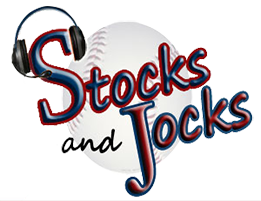Blog
Hal Snarr: Will the cocktails the policy mixologists keep serving result in the nastiest economic hangover ever?
September 13, 2017
When the economy begins to sink into recession, politicians, economists, policy wonks, and bureaucrats at the Federal Reserve (the Fed) start serving up cocktails of fiscal and monetary stimulus. Although history has shown that the cocktails that these mixologists concoct ultimately gives us a nasty economic hangover, it seems that they have not learned this lesson.
The graph below shows how inflationary monetary policy affects the Case-Shiller Home Price Index. In this diagram, quarterly home prices are plotted versus the M2 money stock from just over two years earlier. Since both variables are in log-scale, the red line in this graph implies that after the Fed raises the growth rate of M2 by 1%, the home prices rise by around 0.367%, nine quarters later. Since the average quarter-to-quarter change in the M2 growth rate is about 16% (this was the case between 1995 and 2004), the line it the graph implies that raising M2’s growth rate by 16% per quarter causes the growth in home prices to increase by 6% per quarter.
The compounding effect of a 16%-quarter-to-quarter rise in M2 has a substantial effect on home prices. For example, suppose the M2 growth rate is 2% (M2 growth rate was 1.7% in the third quarter of 1995) at a time when the Fed decides to set interest rates low for an extended period of time. After 12 consecutive quarters of compounding, the quarter-to-quarter M2 growth rate would accelerate up to 10% (the M2 growth rate was 10.2% in the second quarter of 1998). Further, suppose that the quarter-to-quarter home price growth rate is 12% nine quarters prior to the Fed commencing its inflation (the average growth rate in the home price index was 12% from 1997 to 2007). With home prices accelerating at 6% per quarter, the quarterly growth rate in home prices would reach 119% after 12 consecutive quarters of M2 growing at 16% per quarter.
The acceleration in an asset’s price is referred to as an asset bubble. These are popped after the Fed pokes bubbles with restrictive monetary policy. Poking asset bubbles usually pushes the economy into a recession. This seems obvious in the graph below. It shows that prior to every recession since the early 1980s, a rapid rise in the federal funds rate has resulted in a recession a few months later.
The graphs below illustrate how restrictive monetary policy slows economic growth. In these diagrams, quarterly economic growth rates are plotted versus the quarterly federal funds rate from the previous year. Since both variables are in log-scale, the red lines in these graphs imply that after the Fed raises the federal funds rate by 1%, the economic growth rate declines by 0.4% (0.37% for the earlier period and 0.46% for the latter period). Since the Fed’s average quarter-to-quarter adjustment of the federal funds is 23% (this was the case between 2009 and 2017), the two charts imply economic growth declines by 10% per quarter after the federal funds rate is raised by 23% from the previous quarter.
The compounding effect of a 23%-quarter-to-quarter increase in the federal funds rate is substantial. For example, suppose the Fed wants to normalize rates after it had set its target at 1% for an extended period to push economic growth back up to 3%. Further, suppose that 4.25% is considered “normal” for the federal funds rate. To raise the fed funds rate from 1% to 4.25%, the Fed has to boost its target by 23% a quarter for eight consecutive quarters. Doing this dampens economic growth by around 10% per quarter. After the dust settles and negative compounding kicks in over eight consecutive quarters, the economic growth slips to 1.43%, two years after it had recovered to 3%.
The chart below plots the average annual federal funds rate over time. It suggests that the monetary policy mixologists at the Fed have failed to learn the lesson that its policies cause the business cycle. The first part of this lesson, call it Lesson 1, is: Economic expansions, the white areas in the graph, begin after the Fed pushes the price of credit too low for too long. The second lesson, Lesson 2, is: Economic recessions, the shaded vertical bars in the graph, begin after the Fed pushes the price of credit well above the natural rate of interest.
Is it comforting that the tail end of the above graph, from 2009 and on, appears to show that the Fed has learned Lesson 2? The graph shows that the Fed has slowly pushed the federal funds rate from near zero to around 1 percent in the nine years following the 2008 financial crisis. Keeping the price of credit near zero for such a long time seems to show that the Fed has finally learned that normalizing interest rates from a very low rate triggers recession.
On the other hand, the right tail of this graph also suggests that the Fed has not learned Lesson 1. The last time it kept interest rates at around 1% for a few years resulted in the longest recession since the Fed was given the keys to the economy. Since 2008, the Fed has kept interest rates at an even lower level for nine years and counting. If Austrian Business Cycle Theory is correct, then the historic monetary stimulus party of the last nine years may trigger the most painful economic hangover ever.
Follow Stocks & Jocks on Twitter — Follow Hal Snarr on Twitter





